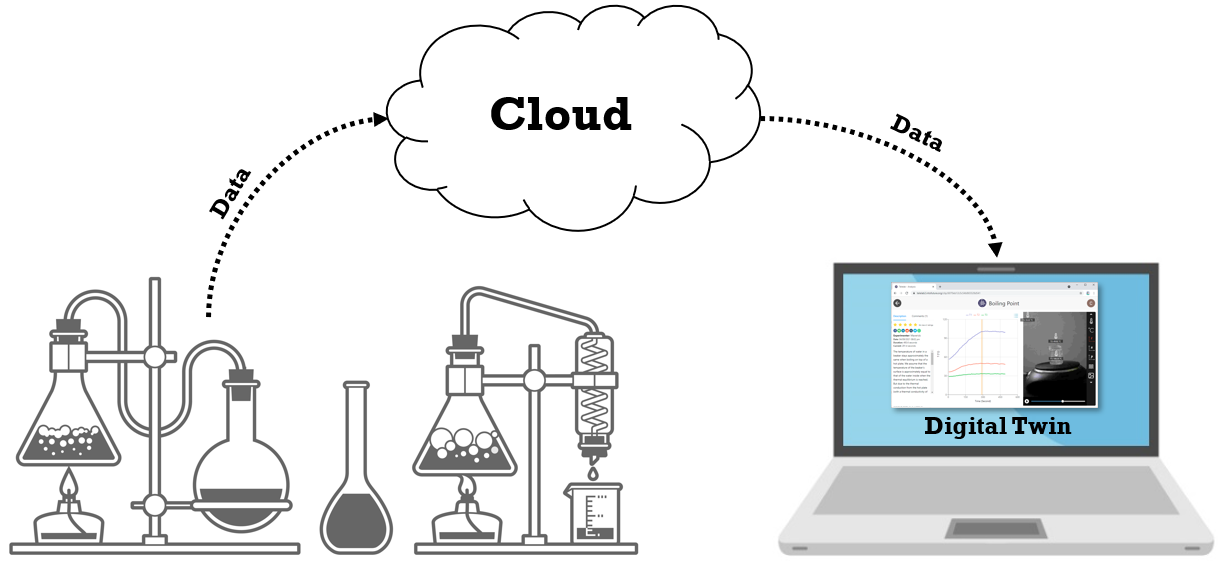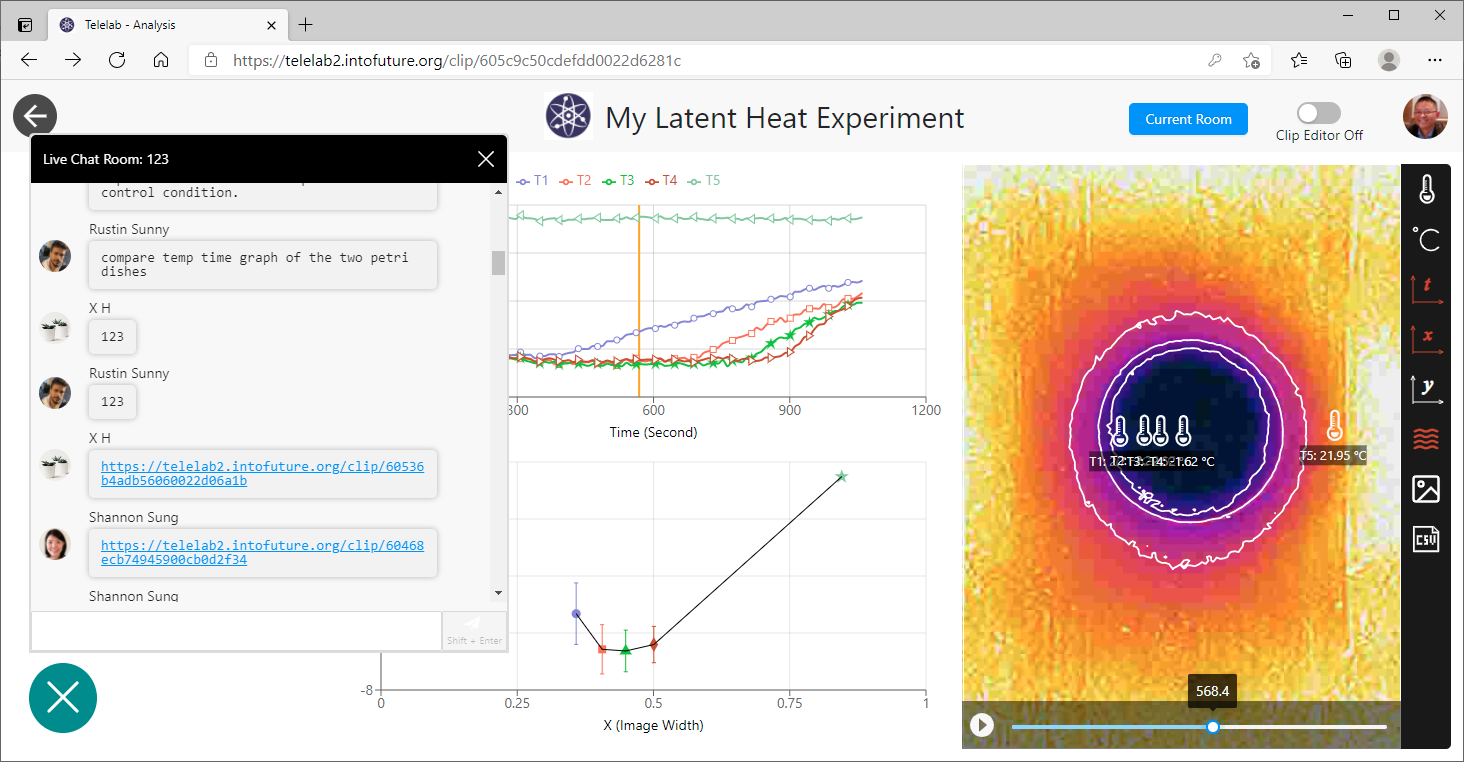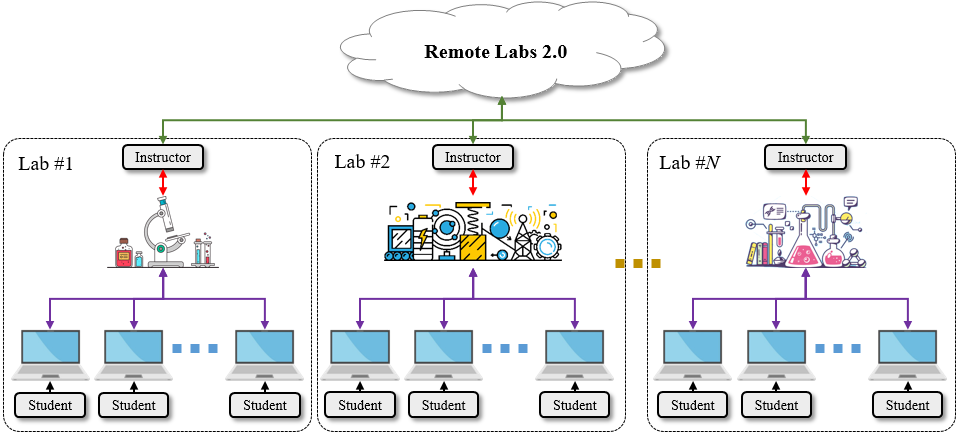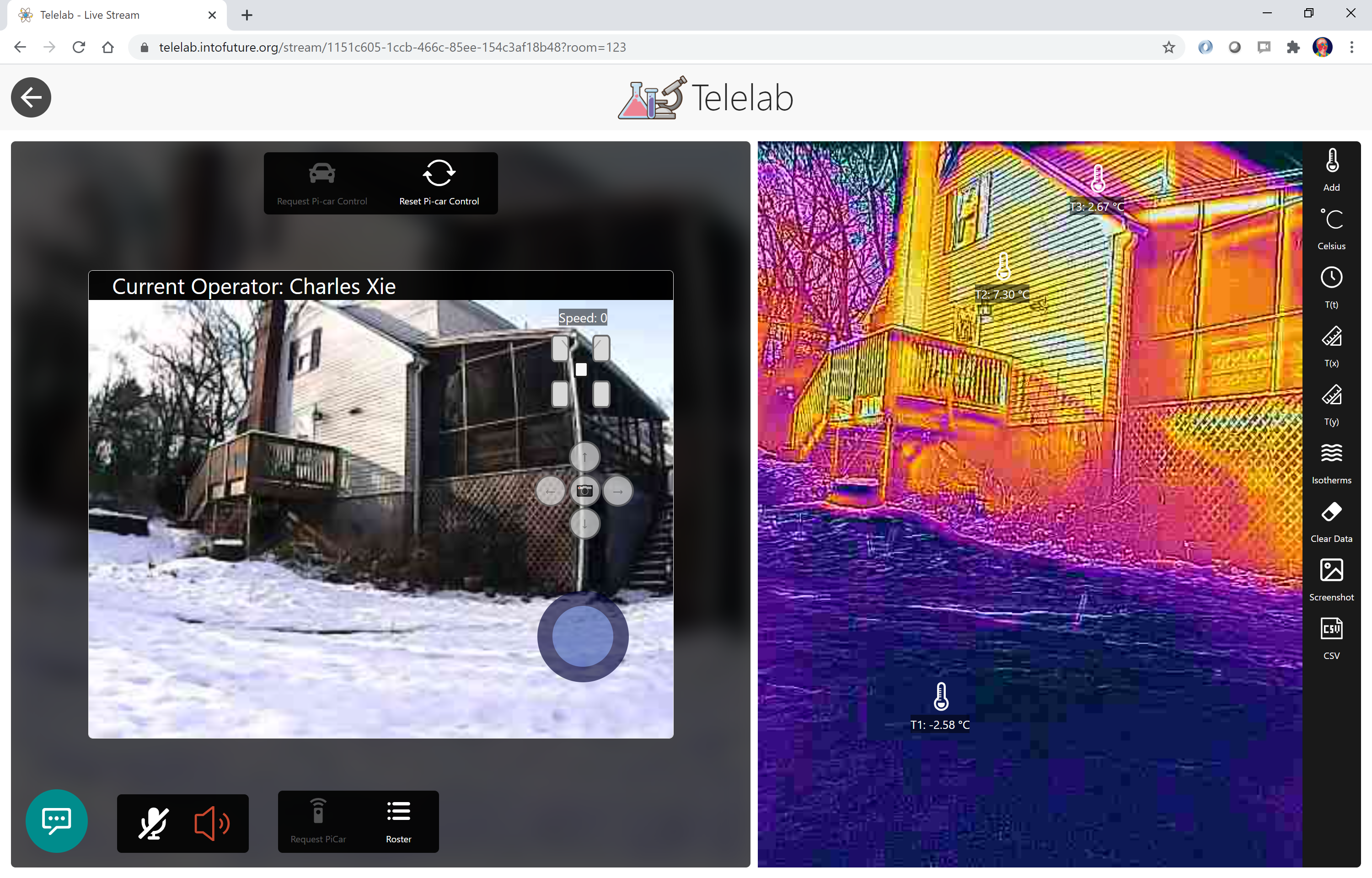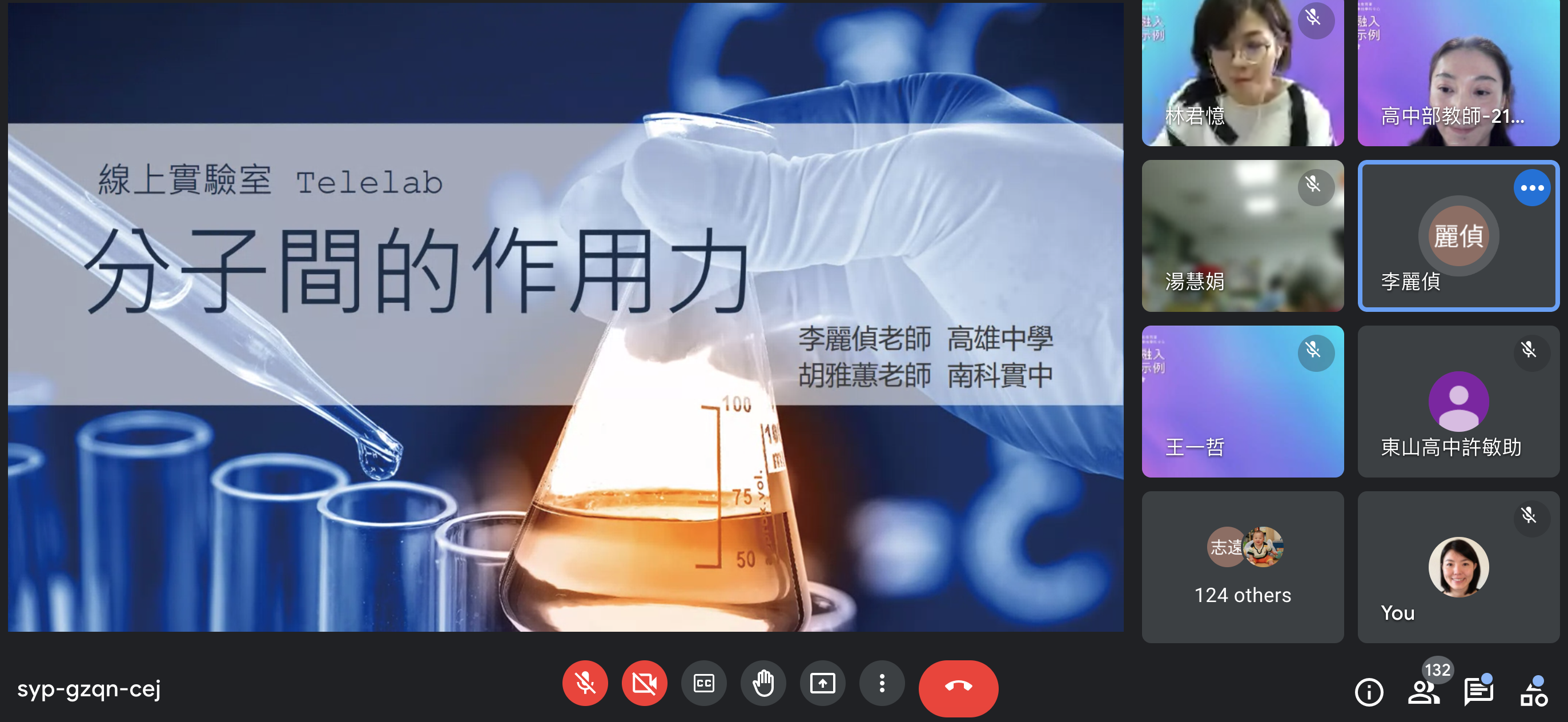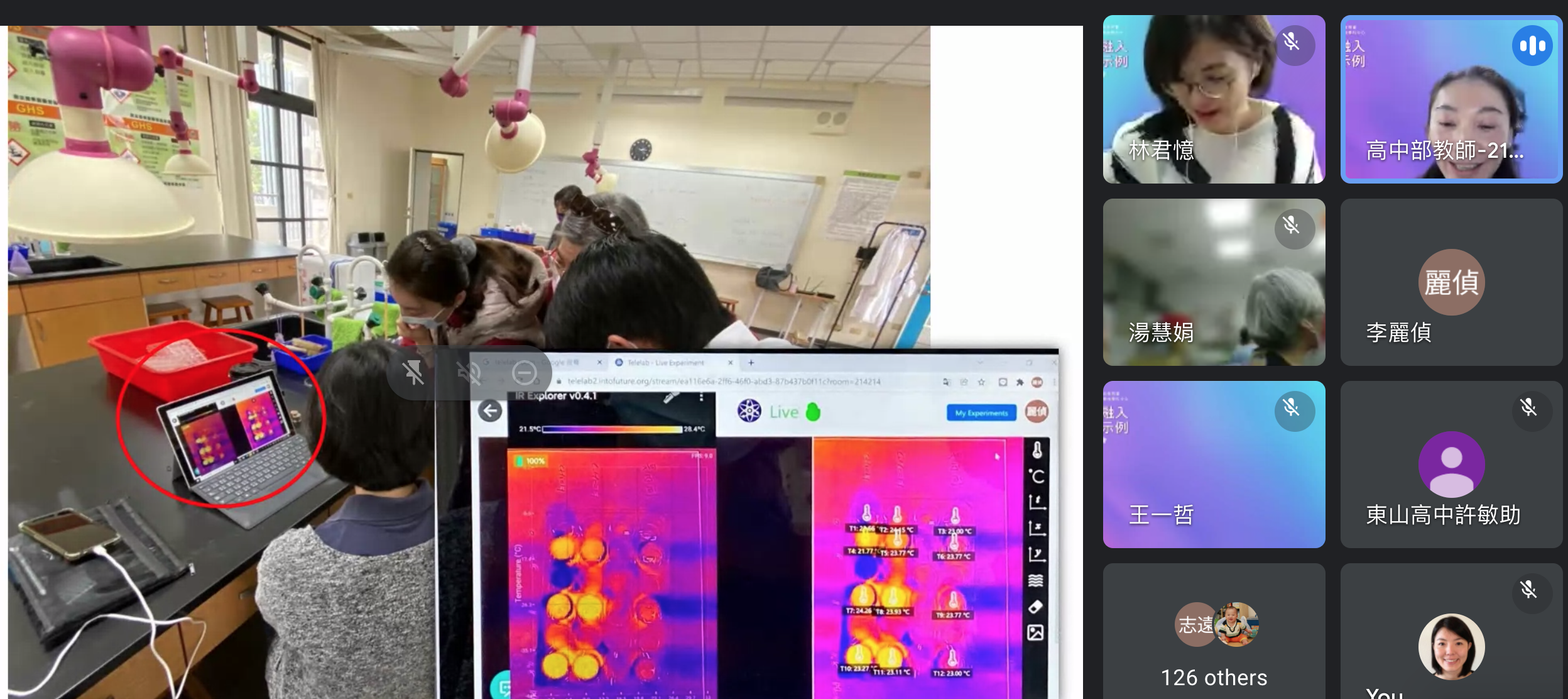Telelab: Broadcast Your Scientific Discoveries
|
To enhance and enrich distance learning of science and engineering in formal and informal settings, IFI is developing an innovative cyberinfrastructure, Telelab, using a combination of technologies such as cyber-physical systems, digital twins, virtual reality, augmented reality, robotics, cloud computing, mobile computing, and teleconferencing. Telelab approximates real-world observation and laboratory experiences in an online environment with mechanisms including, but not limited to, telepresence, scientific visualization, data synchronization, remote control, mixed reality, and social interactions.
Like video conferencing software, Telelab allows many students to freely access and participate in ongoing and past experiments from a Web browser and allows any educators to create, operate, and manage their own remote labs. We envision it as an implementation of remote labs 2.0, a distributed model in contrast to the first generation of remote labs that are somewhat centralized. With Telelab, even students can start their own remote labs and share with others—imagine a student in the United States performs an experiment in the lab and shares it with students in Africa!
Based on the Telelab platform, IFI is developing and testing optimal strategies and pedagogies for engaging students with socioeconomic diversity and broadening their participation in science exploration. We envision that, over time, Telelab will become a science hub for millions of students to share, access, and learn from a large number of science experiments anytime, anywhere. Such open online labs promise to democratize science learning and mitigate educational inequity, especially for underserved schools that lack resources to conduct a wide variety of authentic science experiments.
Telelab is being used by science educators around the world.
|
Entrance
Driver Apps
Articles
Three Approaches
Chemical Reaction
Engaging Students in Distance Learning of Science with Remote Labs 2.0
Privacy Policy
“Students cannot touch the real objects, but they can add thermometers onto the
real objects. This is really cool! They can do hands-on investigations even without
touching the objects. It would be even better if they can have more interactions with
the objects.”
“I thought it was really cool that although we are all so far apart in distance, we were
all able to participate in the live experiment together in real time. I liked the thermal
cameras since we were not able to be there in person it gave us a nice visual representation
of what was happening during the experiments.”
Developers
This project is supported by the National Science Foundation (NSF) under grant numbers #2054079 and #2329563. Any opinions, findings, and conclusions or recommendations expressed in this material, however, are those of the authors and do not necessarily reflect the views of NSF.
|

